Materials and material science
An often forgotten and often somewhat neglected point in many film productions is the question of the materials from which the props and equipment are made. This question is particularly important in historical films.
It may sound trivial, but the fact that materials age visually is of crucial importance. Different materials have a specifically different appearance at different times, with different materials ageing at different rates or slowly and in different ways.
Basically, what is old today was once new. The crucial question is how old an object was when the scene in which it is used took place, and what it looked like or would have looked like at that age. For this reason, the use of original artifacts is important and appropriate in some situations and constellations, whereas in other situations and constellations it may be better to resort to the use of facsimiles.
Original versus facsimile
The following scene can be found in the eight-part German documentary „Krieg der Träume 1918-1939“ („War of Dreams 1918-1939“) (2018) by von Jan Peter und Frédéric Goupil: a record in a paper sleeve stands on a desk next to a table lamp, and next to it is a framed propaganda portrait photo of Hitler. The scene is set in Munich in May 1936.
The table lamp consists of a base made of porcelain and brass – materials that generally show little or no signs of ageing when well cared for – and a fabric lampshade, which also shows no signs of ageing. The photo of Hitler and the surrounding frame also look as new as they probably did in 1936.
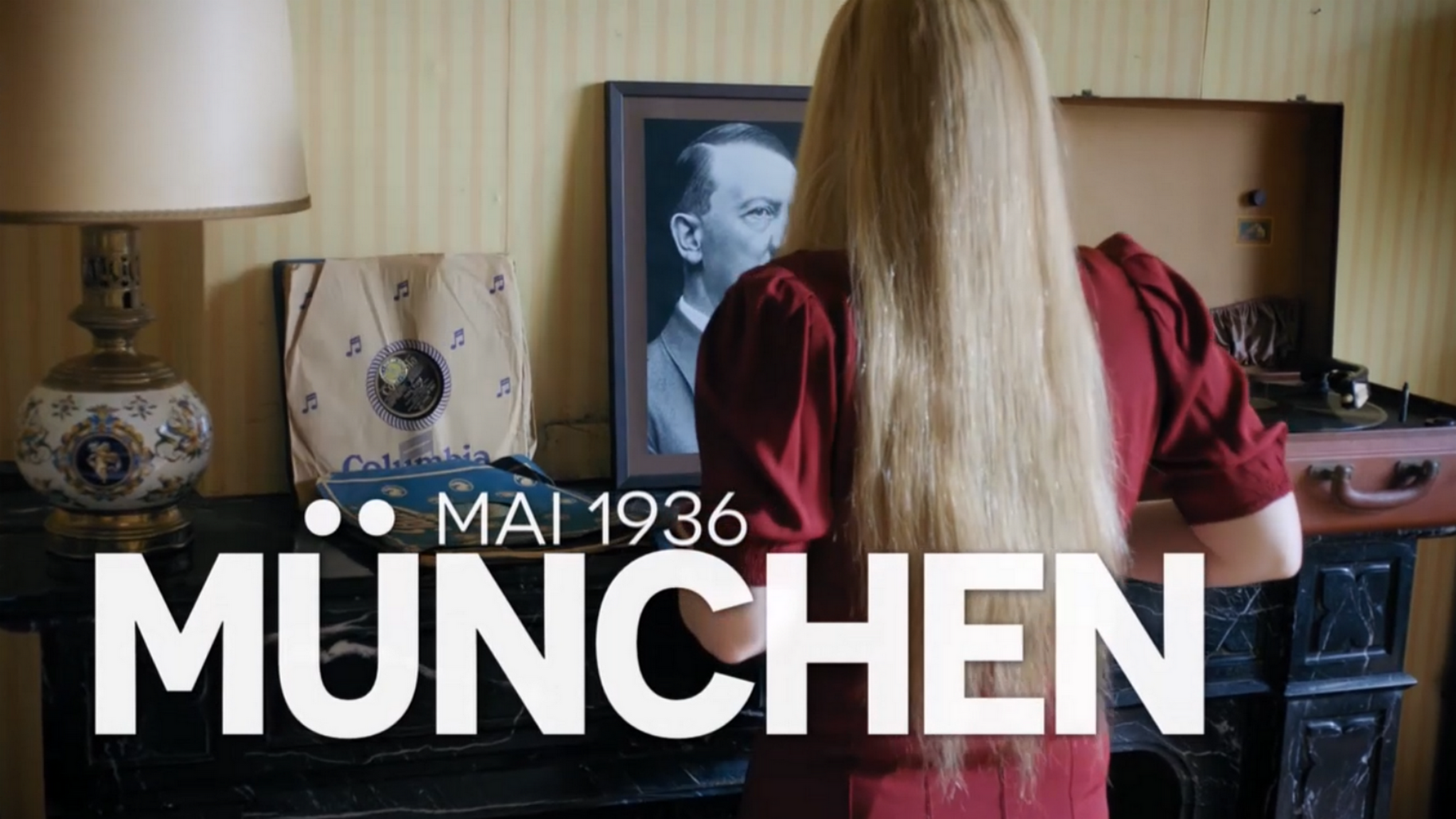

The record sleeve is somewhat different. It appears to be an original record sleeve from the 1930s. The paper of this original is old and brittle, yellowed and creased. It is obviously not always best to work with originals if, as in this case, they create a visual anachronism. The paper, which was new to the scene, looks as if it was almost a century old in 1936.
At this point it would have been better to use a facsimile – as has long been the case for flowers and foodstuffs, for example – to which a few light traces of use could then perhaps be carefully added.
Money, banknotes and coins
The same applies to money. In the vast majority of films, historical coins and banknotes are used, whereby the bills are often ragged and torn, soiled and yellowed, and the coins are dirty and dark. In most cases, it would be better to either use well-preserved banknotes, if possible, or to make facsimiles of the banknotes and clean the coins thoroughly so that both have the appearance of the times in which the movie is set.
In „The Miracle of Wörgl“ („The miracle of Wörgl“) (2018) by Urs Egger, a hundred shilling bill can be seen passing from hand to hand in one scene as the new mayor explains his plan to introduce a regional complementary currency to the local council. The banknote is the main character in this scene, and an original banknote was used, although it is very crumpled and its colors are completely faded.
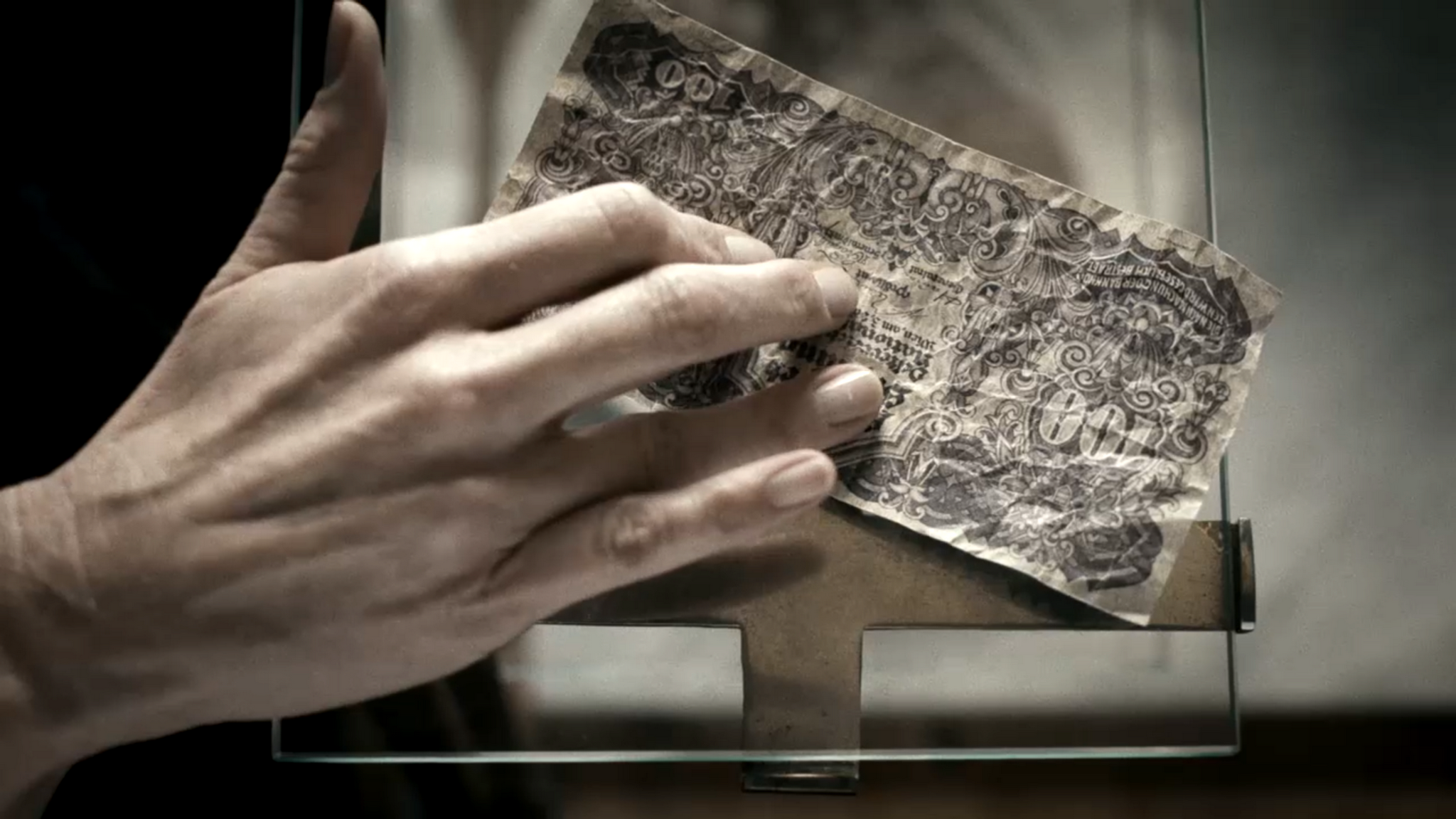
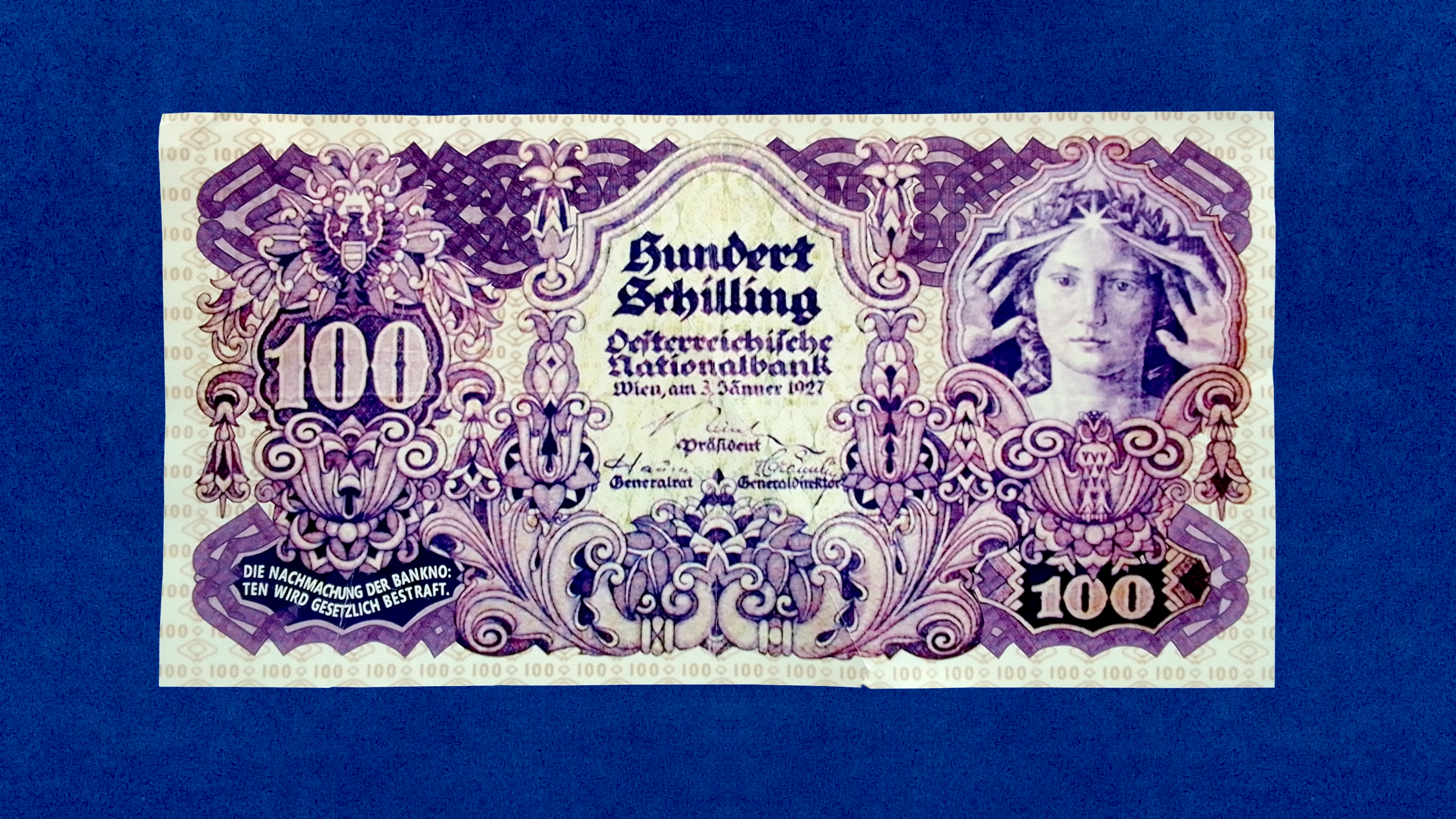
It would have been better to use a facsimile at this point, especially as the value and function of the money is explained in this sequence, which could possibly have been made a little more effective by using a slightly more mint-looking bill – which thus also visually represents its value.
The same applies to the coins used. Instead of old, worn and dirty coins, as often seen in films, it would be much better for most eras and in the vast majority of cases to use coins that look as new or used as the coins in our wallets today.
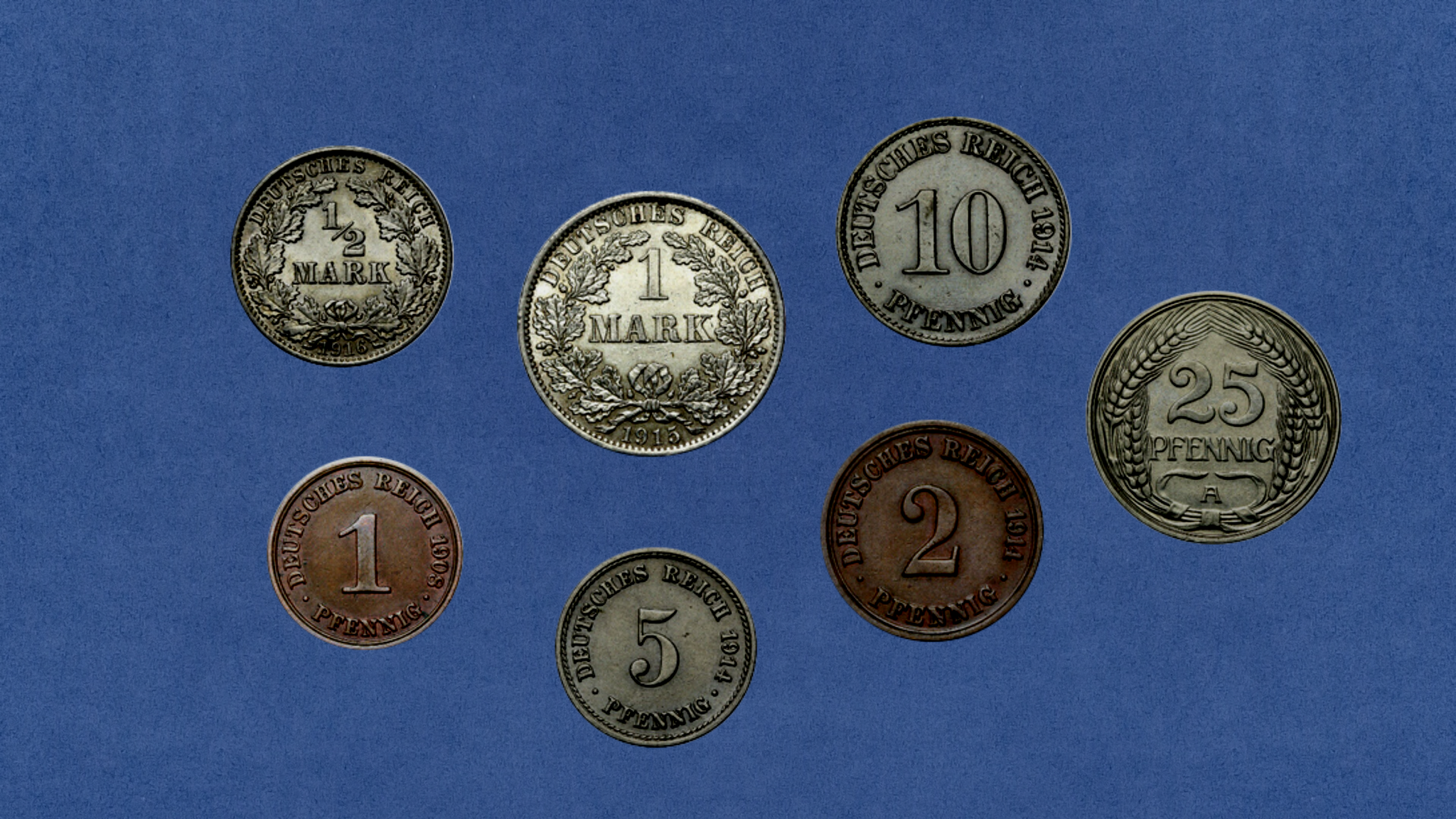

For this purpose, either original coins can be refurbished or it is possible to use restrikes, which in certain cases can be purchased for a manageable two-digit sum. For legal reasons, they must be recognizable as restrikes, but these small differences are not visible in the film, especially as they often only affect one side – as in the case of the one-mark piece shown here – and are only visible on closer inspection.
Letters and books, newspapers and magazines
Letters and books, newspapers and magazines age significantly, and this ageing and their different appearance in different periods often tells a story itself, contributes to the success of a scene or is even part of the action in some cases.
In many cases, it is therefore essential to make facsimiles of printed matter and papers.
In the first episode of the six-part TV series „Davos 1917“ (2023) by Jan-Eric Mack, Anca Miruna Lăzărescu and Christian Theede, German agent Franz secretly searches Johanna Gabathuler’s room. Among other things, he picks up a copy of Bertha von Suttner’s „Die Waffen nieder!“ („Down with Weapons!“). This is the popular edition published by Vienna-Berlin in 1914.
The book is an original that clearly shows its one hundred and ten years of history. At the time of the story, however, the book would have been no more than three years old, and it can also be assumed that there would have been a less worn, largely new-looking copy on the desk of Johanna Gabathuler, the daughter of the owners of the „Curhaus Cronwald“.
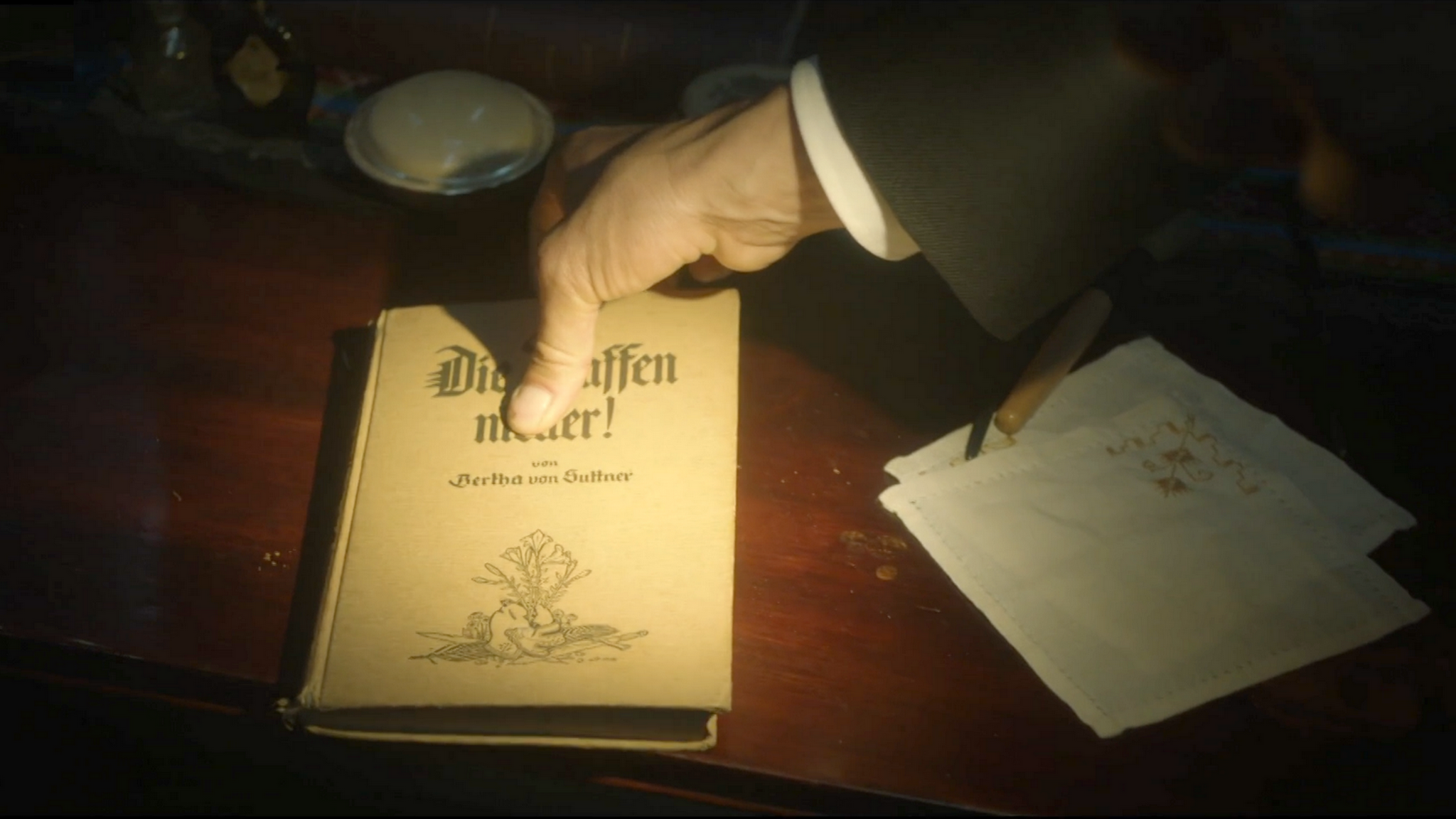

It would therefore have been more consistent to use a largely new-looking facsimile instead of the original. If this is not possible for budgetary reasons, for example, a facsimile of the dust jacket can also be used, which could be placed around any bound book of the same size – in this case 21.8 x 15.0 x 1.9 cm – that is in mint condition, and which can be easily produced with considerably less effort and at extremely low cost.
In some cases, however, the reverse process is necessary and the paper must be artificially aged.
In “Back to the Future” (1985) by Robert Zemeckis, a film that plays with time in a way that is successful in every respect, Marty McFly writes a letter to Dr. Emmet Brown in 1955. After his return to the year 1985, thirty years have passed for the letter and Dr. Brown, but only a few moments for Marty and the viewers when he holds the same letter in his hands again.
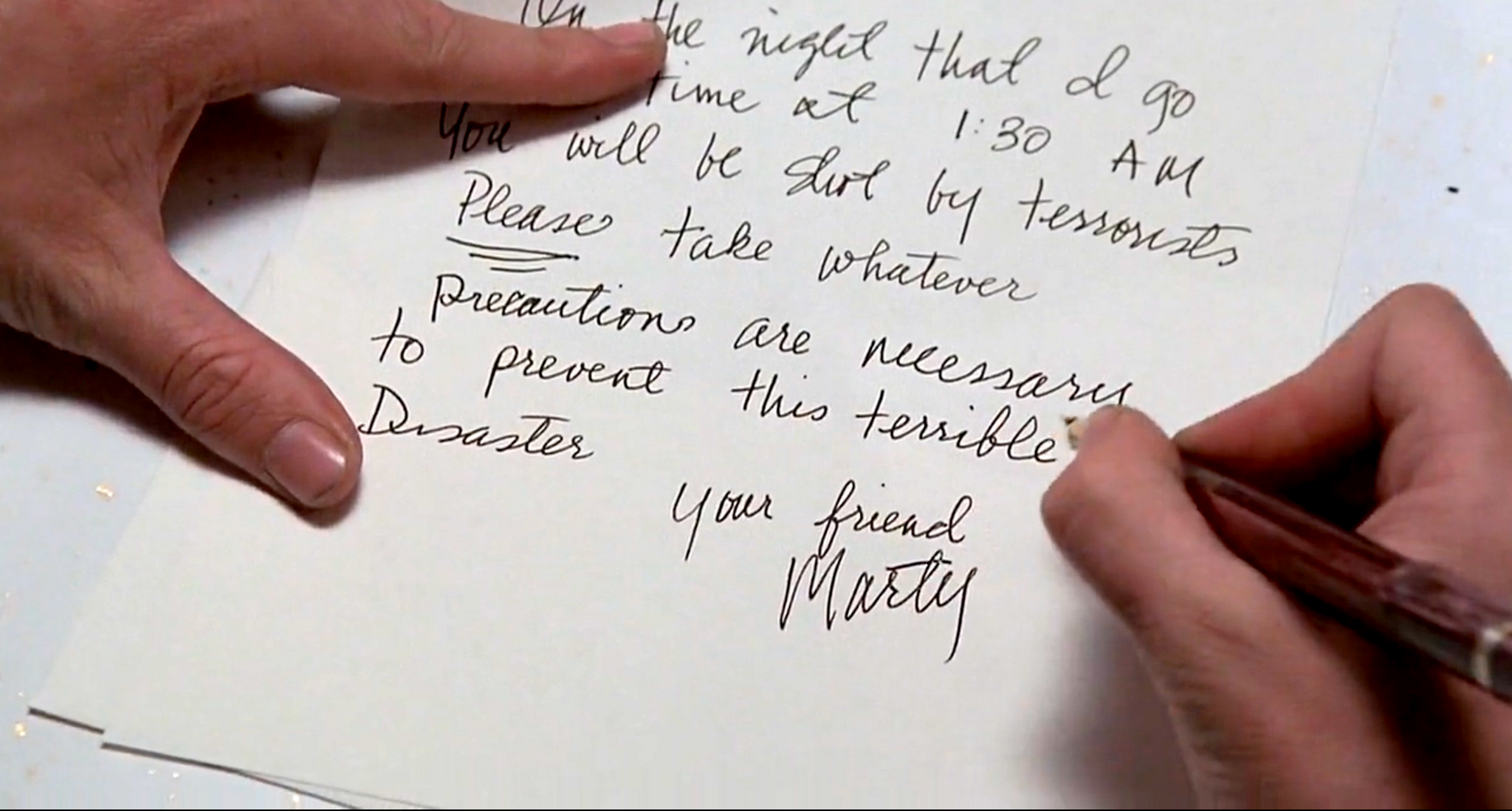
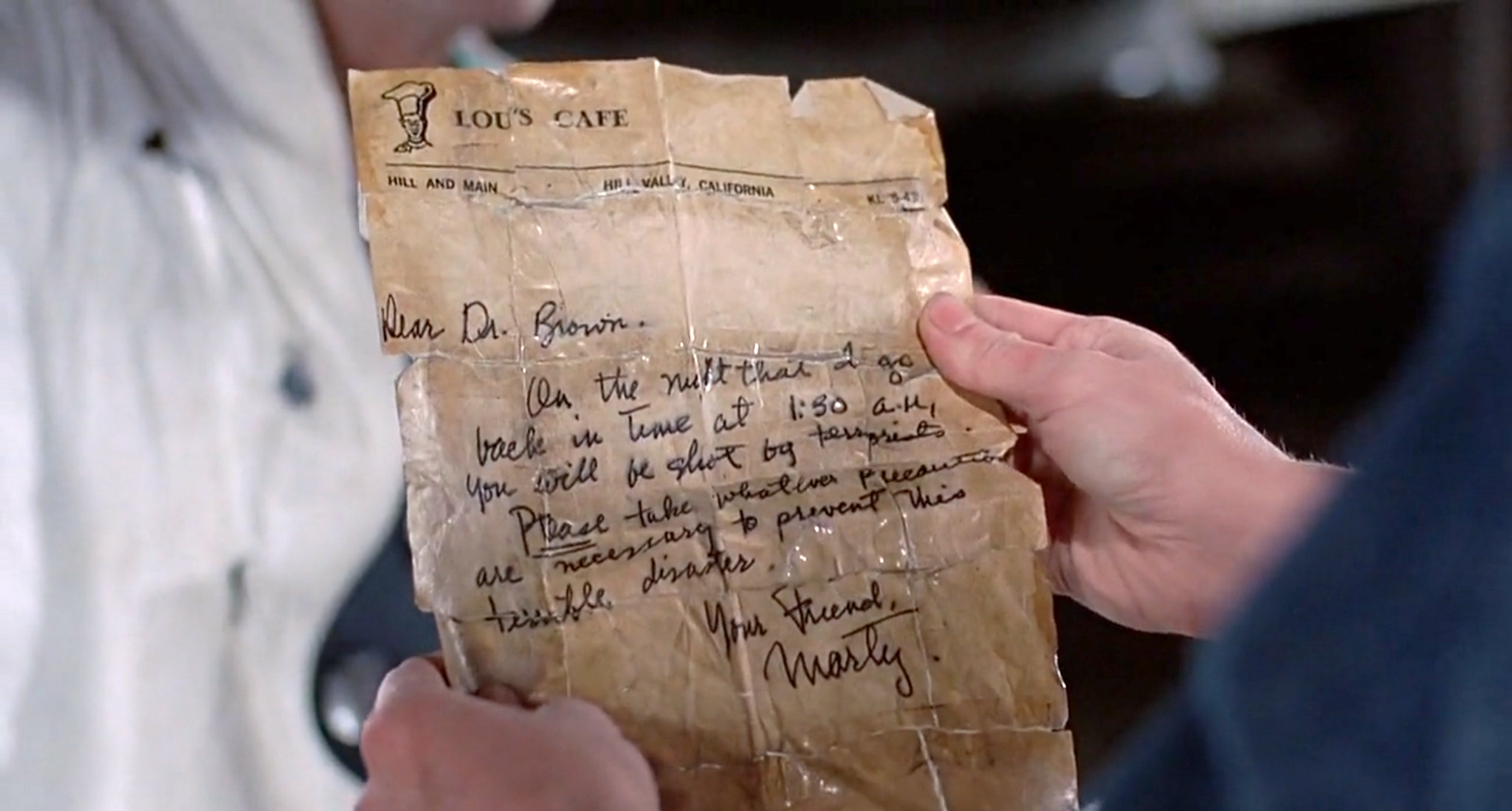
The ageing of the paper is clearly visible. In addition, Dr. Brown tore up the letter in 1955 because he thought it was dangerous to know anything about the future. However, after Marty’s departure – and unbeknownst to him and the audience – he changed his mind, picked up the scraps and stuck the letter back together with Sellotape.
The yellowed and crumpled paper clearly tells the story of the long three decades that have passed since then, even if it was only a few moments for Marty and the audience.
On closer inspection, however, you can see that the two letters are not identical. Some words have slipped in the lines in the handwritten copy, the word Please is underlined three times in the original from 1955, but only twice in 1985, the time AM and the word Disaster are written in capital letters in 1955, but in small letters in 1985, and the word Friend is written the other way round, which no audience member is likely to have noticed.